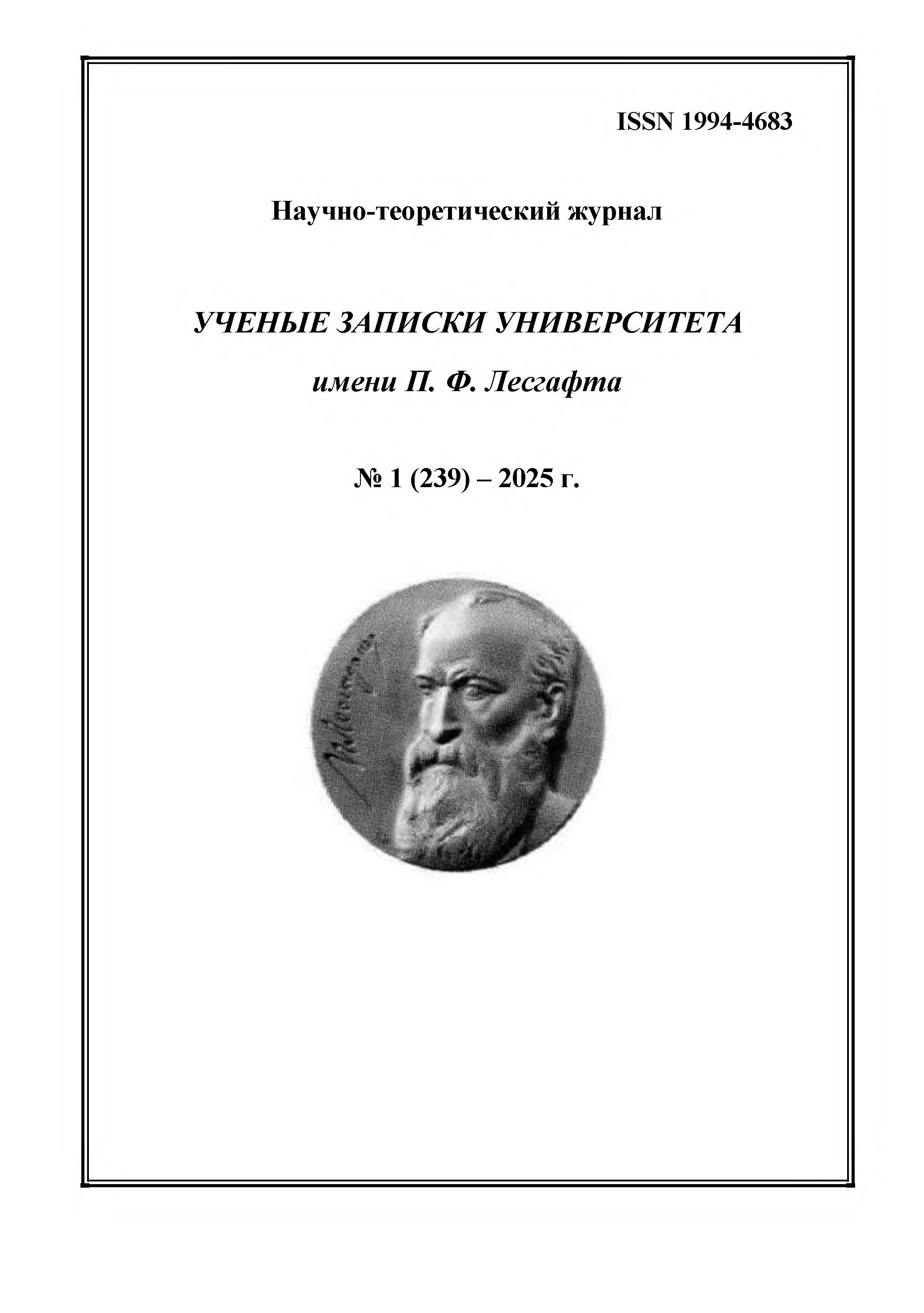employee from 01.01.2004 to 01.01.2007
from 01.01.1990 until now
Russian Federation
CSCSTI 77.29
The purpose of the study is to analyze the overall group dynamics of changes in the training load volume of highly qualified biathletes in the context of long-term preparation and to individually assess the dependence of competitive performance on load parameters. Research methods: analysis of methodological materials on the training of Russian men's and women's national teams, athletes' self-monitoring diaries, and heart rate monitor data for each athlete, as well as analysis of competition protocols. Research results and conclusions. The overall training load, the ratio of strength to endurance workload, and its distribution across intensity zones are key parameters in individual planning. The allocation of primary training resources for biathletes of the Russian national teams within the annual training cycle follows a uniform structure in both the junior and main national teams. For biathletes of the Russian national teams, the proportion of endurance training in the total workload varies within a fairly wide range of 72-95%. At the same time, juniors are characterized by minimal indicators of the proportion of total cyclic load in the overall training volume at 72%, indicating the predominance of cyclic nature of the load, with a gradual increase up to 95% in the men's and women's categories. When moving from the junior category, the ratio of contributions from different intensity loads changes; biathletes of the Russian national team train according to the concept of the polarized model. For top-level biathletes at the stage of maximum performance realization, the share of load in the mixed intensity zone (equivalent to MIT in foreign literature) is 4-7%, while 3-5% is accounted for by high-intensity load.
biathlon, highly qualified athletes, training equipment, cyclical load, strength load, intensity zones, competitive performance indicators
1. Tønnessen E., Sylta Ø., Haugen T.A. [et al.] (2014), “The road to gold: Training and peaking characteristics in the year prior to a gold medal endurance performance”, PLoS One, Vol. 9, No. 7, DOIhttps://doi.org/10.1371/journal.pone.0101796.
2. Sandbakk Ø. and Holmberg H.C. (2017), “Physiological capacity and training routines of elite cross-country skiers: Approaching the upper limits of human endurance”, Int. J. Sports Physiol. Perform., Vol. 12 No. 8, pp. 1003–1011, DOIhttps://doi.org/10.1123/ijspp.2016-0749.
3. Kenneally M., Casado A., Gomez-Ezeiza J. and Santos-Concejero J. (2021), “Training intensity distribution analysis by race pace vs. physiological approach in world-class middle- and long-distance runners”, Eur. J. Sport. Sci., Vol. 21, pp. 819–826.
4. Solli G. S., Flom A. H., Talsnes R. K. (2023), “Long-term development of performance, physiological, and training characteristics in a world-class female biathlete”, Front. Sports. Act. Living, Vol. 5, DOIhttps://doi.org/10.3389/fspor.2023.1197793.
5. Grushin A. A., Nageikina S. V., Prikhodko E. N. (2018), “Speed strength training in cyclic sports with the manifestation of endurance (on the example of cross-country skiing)”, Bulletin of sports science, No. 2, pp. 11–16.
6. Issurin V. B., Lyakh V.I.2, Lyovushkin S.P. (2023), “Research results and practical recommendations for the construction of athletes' training based on block periodization”, Bulletin of sports science, No. 2, pp. 15–22.
7. Novikova N. B., Zakharov G. G., Kotelevskaya N. B. (2019), “Variants of the load distribution of high-class skiers in the annual training cycle”, Uchenye zapiski universiteta imeni P.F. Lesgafta, No. 7 (173), pp. 142–147.
8. Myakinchenko E. B., Kriuchkov A. S., Adodin N. V., Feofilaktov V. (2020), “The annual periodization of training volumes of international-level cross-country skiers and biathletes”, Int. J. Sports. Physiol. Perform., Vol. 15, No. 8, pp. 1181–1188, DOIhttps://doi.org/10.1123/ijspp.2019-0220.
9. Jonsson Kårström M., McGawley K., Laaksonen M. S. (2019), “Physiological responses to rifle carriage during roller-skiing in elite biathletes”, Frontiers in physiology, Vol. 10, pp. 15–19, DOIhttps://doi.org/10.3389/fphys.2019.01519.
10. Sandbakk O., Sandbakk S.B., Ettema G., Welde B. (2013), “Effects of intensity and duration in aerobic high-intensity interval training in highly trained junior cross-country skiers”, J. Strength. Cond. Res., No. 27 (7), pp. 1974–1980, DOIhttps://doi.org/10.1519/JSC.0b013e3182752f08.







